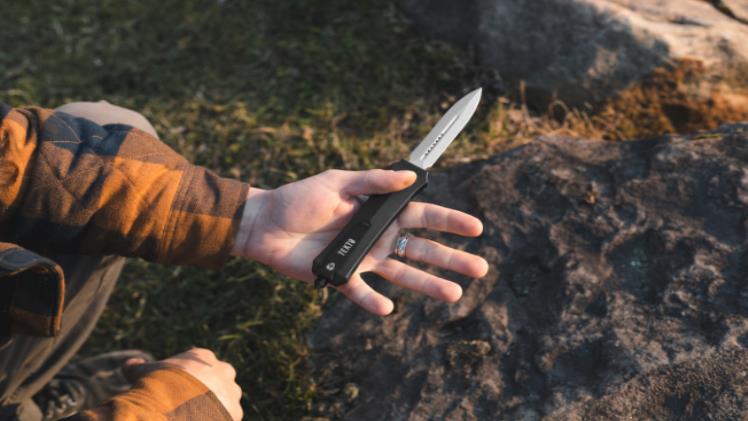Survival in the wilderness is not a matter of luck; it’s a matter of skill, preparation, and flexibility. Perhaps the most universal piece of kit an adventurer can have is a good knife. In addition to its general utility, a blade is a lifeline in situations as varied as shelter construction to food preparation. Proficiency in fundamental knife skills adds both security and efficiency to the skills of adventurers, enabling them to react with confidence in uncertain situations. Here, we discuss five essential knife skills that need to be practiced by every outdoor enthusiast.
Controlled Cutting for Safety and Precision
Cutting with effect is important to both efficiency and safety. The goal is to be in control of the blade without risking injury. Always cut away from the body and remain firm on the ground. Repetition of controlled cutting on a variety of materials, such as rope, branches, and cloth, builds muscle memory, rendering accidents improbable. Maintaining a firm, consistent grip prevents slippage, and forceful, even strokes conserve energy. Building the skill of modulating pressure in accordance with the material’s resistance also extends the life of the blade so that it can be a reliable instrument in extended expeditions. Repetition of these skills improves proficiency and builds confidence in handling more challenging survival situations.
Wood Carving and Tool Making
Carving is a key skill for tool, utensil, and lean shelter building. By carving raw wood into practical items, travelers are able to meet several survival needs with limited materials. The techniques of whittling, feather-sticking, and notch-cutting allow clean cutting of materials. Having an excellent OTF knife is essential for these tasks, as it combines portability with sharpness and strength. Practice on many different woods adds to being adaptable because hardness and grain structures vary widely in nature. Apart from carving, being able to prepare stakes, traps, or simple cooking tools is very much a defense for self-sufficiency in the wild. Working on small, safe projects first enables new users to develop confidence before attempting more sophisticated survival gear.
Efficient Food Preparation
Effective and safe food preparation is another area where knife skills come in handy. Slicing meat, vegetables, and greens is not only about sharp blades, but using the correct technique to prevent wastage and contamination. Practice making slicing, dicing, and filleting motions without compromising on speed or accuracy. In cutting wild game while processing, cutting with respect to natural seams provides greater meat retention and reduces the chances of injury. Furthermore, efficiency in food preparation allows adventurers to conserve energy because an expertly managed knife mechanizes steps that might otherwise consume valuable time. Acquiring these skills also encourages awareness and patience, both survival-relevant skills.
Defensive Maneuvers and Emergency Use
While most knife contacts are practical, some knowledge of basic defensive techniques is useful. This includes learning how to grip firmly, control distance, and use the blade as an extension of the body for protection from self-harm. Controlled thrusts, blocks, and parries drilled enhance response time in surprise contacts. The aim should remain defense and dissuasion, and not aggression. By combining situational awareness with controlled movement, explorers can travel through both natural threats and threats of potential hazards with increased safety. Regular practice renders these actions second-nature, contributing to overall survival confidence. Even basic defensive training considerably reduces panic and hesitation in high-pressure environments.
Fire Starting and Shelter Construction
Knives play a multi-purpose function in non-cutting and whittling activities. In fire starting, a blade can shave fine wood for tinder or effectively strike a ferrocerium rod. In shelter building, knives allow for dainty trimming of branches, rope cutting, and making secure notches. Knowledge of leverage, angle, and material characteristics makes these processes faster and more secure. By combining knife skills with knowledge of the ground and weather, explorers can make shelters stronger and use more efficient fuel. These are skills that cannot be replaced when protection and survival require endurance for extended periods. Mastery of these skills also fosters resourcefulness, turning limited supplies into effective solutions.
All in all, knife technique mastery is not just a skill; it’s a survival strategy. From controlled cutting to carving, cooking, defense, and fire or shelter work, each technique equips adventurers with the flexibility required for uncertain terrain. Practicing regularly ensures competence, safety, and versatility, making an ordinary blade an indispensable ally. For outdoor enthusiasts, skill with the right cutter can be the difference between discomfort and self-reliance, turning survival into a skillful routine.








Leave a Comment